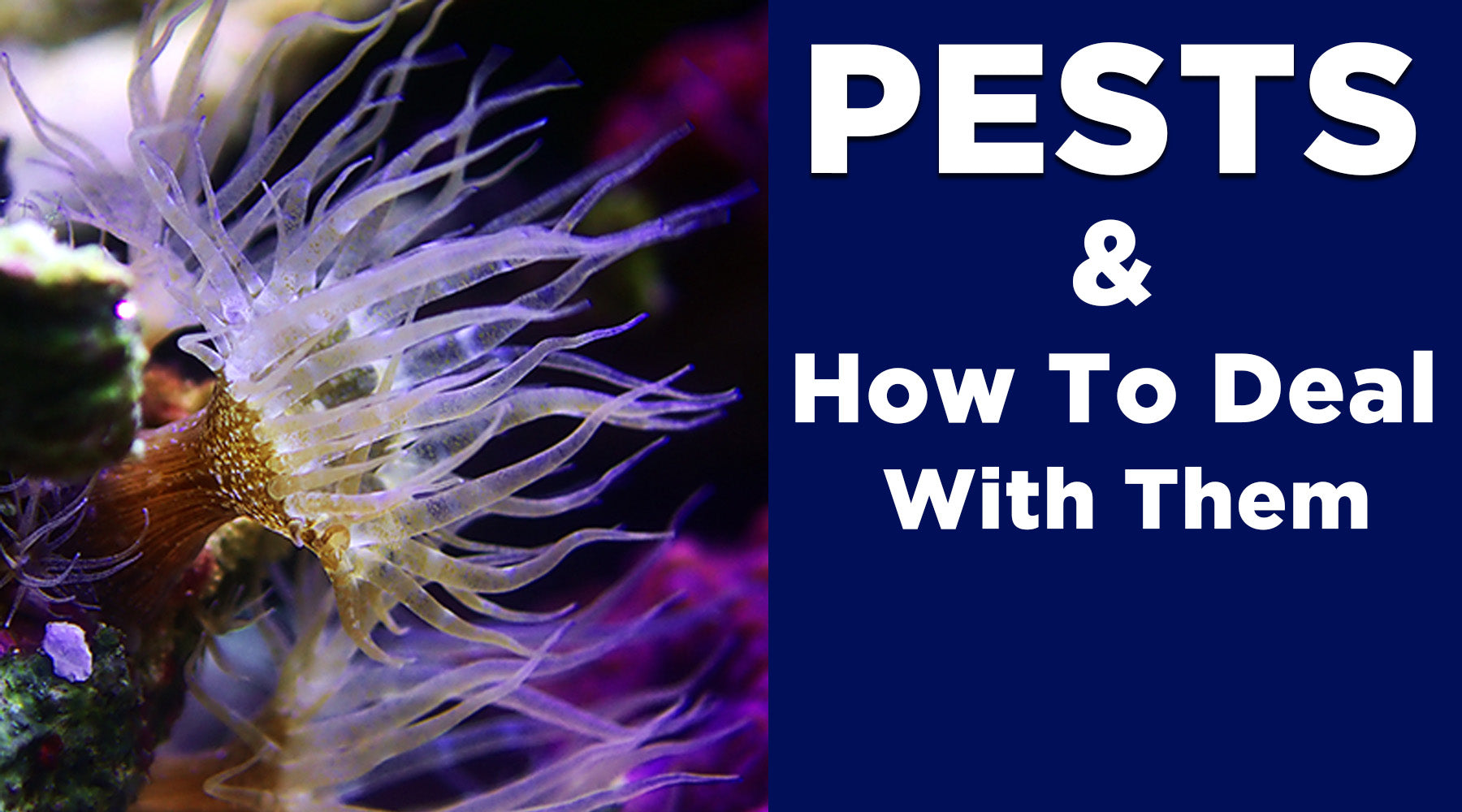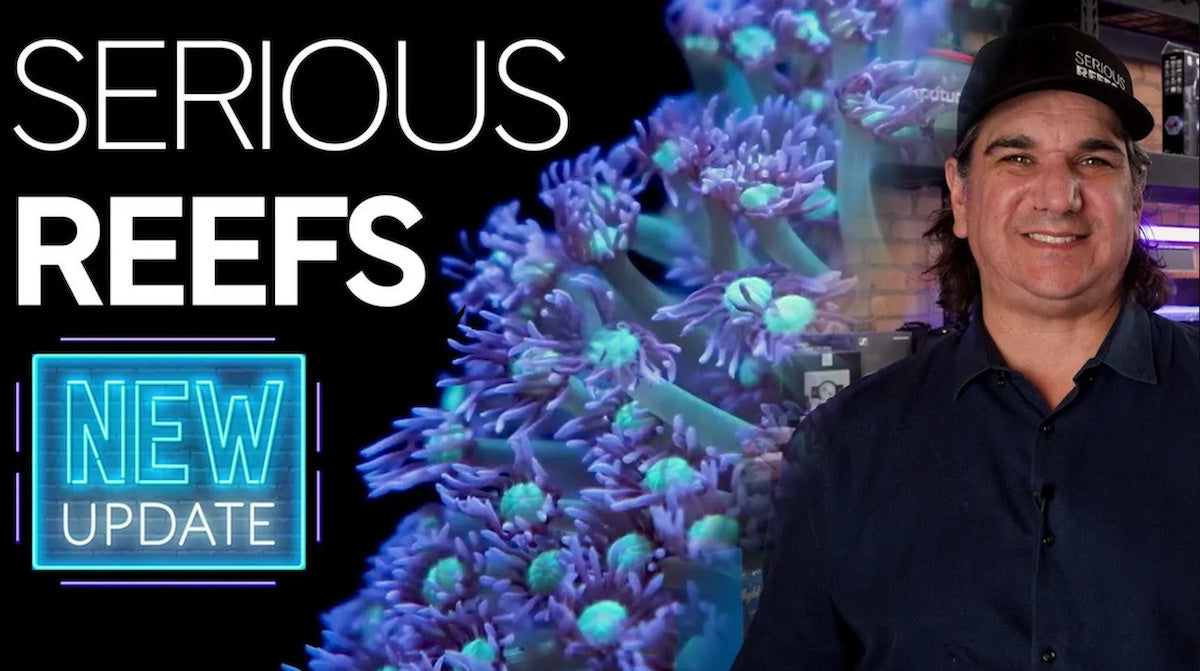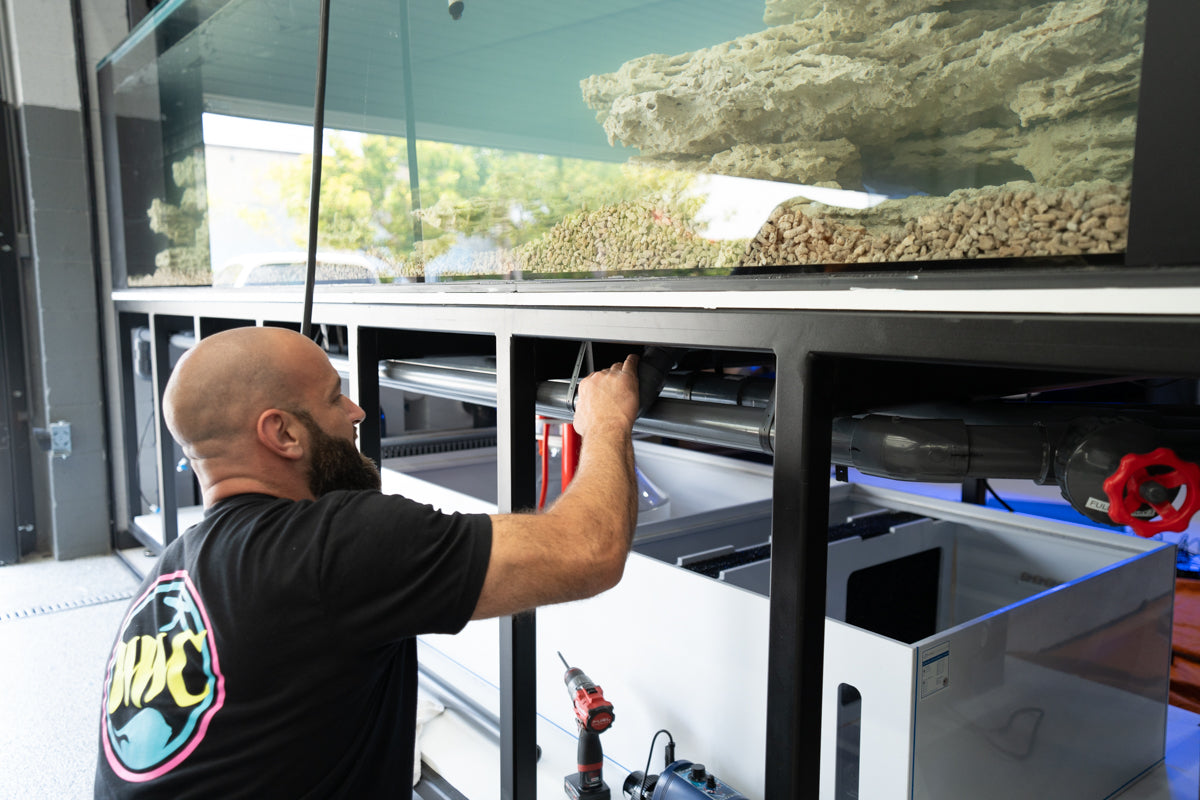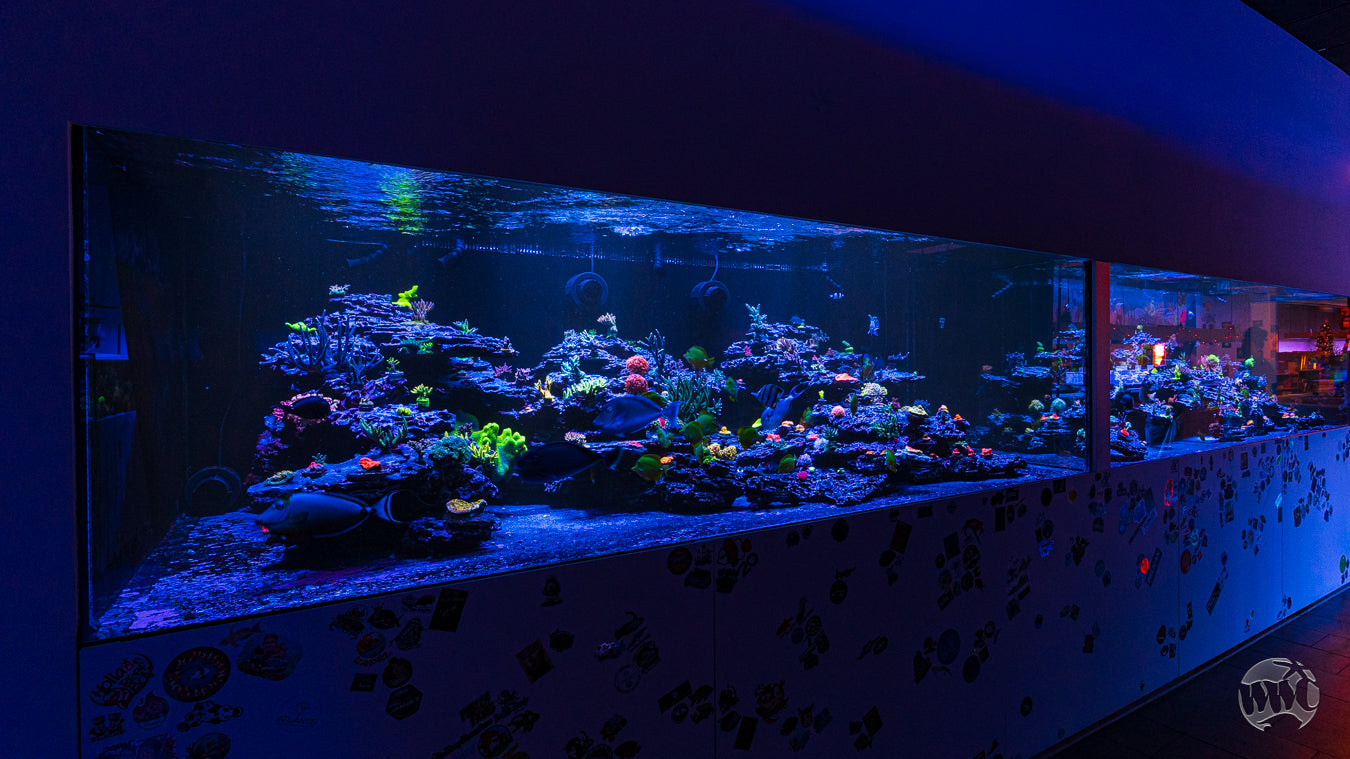Identifying an aquarium pest you’ve never seen before, almost always starts out like this: “oh that’s interesting, I haven’t seen that before, I wonder what that is?” and can quickly morph into a “oh my goodness they are everywhere, how do I get rid of them?!”.
When keeping a saltwater aquarium, there are a handful of pests you should keep an eye out for. Many times you can prevent them from ever entering your tank by taking preventative action. If they do make it past your safeguards, there are things you can do to help take care of them.
When looking at different types of saltwater aquarium pests, they can be categorized into a few different groups. First there are the legit pests, these are things you don’t want in your tank and just the thought of having to deal with removing them gives you an instant headache. Conversely, there are those species which could be considered potential pests, oftentimes they are okay and are a part of a healthy tank ecosystem, but when they get out of control they can be problematic. The last category of pests are the ones who look like pests, but aren’t and are a sign of a healthy, thriving, tank.
Legit:
Hydroids: Hyrdoids or hydrozoas look similar in shape to aiptasia, though they may be slightly smaller and not as easy to spot. These cnidarian-like pests can be single polyps or they can show up as a colony. While their size might not seem worrisome, their sting can harm and irritate corals and even fish. Through some diligence they can be removed by hand, using chemicals, or even eaten by fish or members of the clean up crew.
Majanos: Some anemones you want in your tank, but not Majanos. It is easy to confuse Majanos for a baby anemone, but if it has a short base, is more of a brown in color, then it is likely something you’ll want to get out of your tank. Majanos have stinging cells that will repeatedly harass nearby coral and can kill them. In addition to their ability to sting, they also multiply rapidly making them hard to remove. Unlike some of the other pests on this list, these have to be removed by hand, as there aren’t fish or inverts who will consume them.
Aiptasia: Similar to the Majanos, Aiptasia may have newer aquarists excited as they look just Iike baby sea anemones, which they are, but not the kind you want in your tank. They can get in your tank on frag plugs, and live rock, which is why it's important to dip and or quarantine new additions. Once they get in your tank getting rid of them is much more difficult, as they have to be manually treated. Just like the beautiful anemones you want in your tank they can reproduce asexually, i.e. any fragment of them left behind during a manual removal can result in multiple new ones.
Acro-eating Flatworms: Just as their name suggests, these flatworms will chow down, decimating acropora. AEFW’s (Acro Eating Flat Worm) can be tricky to spot, because as they consume the coral they take on the coral's coloration. A good way to determine if they are around is by looking for signs on them. The scarring left behind by their bites, as well as their eggs will be visible near the base of the acropora. Much like with the other pests on this list they can be prevented through quarantine and dips.
Coral eating nudibranch: This is one nudi you don’t want in your tank. The coral eating nudibranchs are small and often hard to see on the corals because their bodies take on the color of the coral they are consuming. What makes these particularly headache inducing is that sometimes preventative measures aren’t enough. Adults are susceptible to dips, but their eggs will survive them, making you think you are in the clear only to have them crop back up.
Redbugs: These tiny, hard to spot, red crustaceans are pests that will feed on Acropora corals. The annoying redbugs are hard to remove and if not caught in time can cause serious damage to even healthy corals. Their hosts are primarily smooth skinned acropora, and to get rid of them, a veterinarian prescribed medication is needed.
Flukes: Gill flukes also known as trematodes are small parasitic worms that will come in on fish. Despite the name they aren’t limited to the gills as they can often be spotted on eyes and along the body of the fish. They are small and appear like pale white irregular shaped scales. There are several ways to manage them from dips to harsher medications.
Mantis shrimp: If you purchase a piece of live rock, there is always the risk that it will come with hitchhikers like mantis shrimp. They are able to tuck away into small spaces and you may never even see them. While they won't mess with your corals they will go after clean up crew members and even fish. They aren't always considered pests though. Shrimp like the Peacock Mantis are often sought after and are great for single species tanks.
Gorilla crab: Like the Mantis Shrimp, the Gorilla crab is another unwanted hitchhiker that can make its way into your tank through live rocks. They can be hard to spot when they are younger, but as they grow you may notice your clean up crew, small fish, and corals disappearing and or dying. If this is something you’ve experienced, keep an eye out for a fuzzy dark bodied crab that looks similar in shape to an emerald crab. Just like the mantis, you don’t want these guys in a reef tank but if you're looking for a unique single species tank, it could be interesting.
Vermatid snails: Unlike some species of snails in an aquarium, the Vermatid snail is stationary. Its calcium shell attaches to the substrate and in order to feed, it projects a cloud of mucus into the water above its opening that will capture food. In addition to providing food, the mucus also will irritate nearby corals, potentially damaging them. Vermatid snails can be removed by hand, but it is necessary to remove the whole structure as the snail will often retreat to the far end and eventually rebuild. However, the bumble bee snail can be added to help remove them naturally.
Potential problem:
Bristleworms: Calling them fuzzy worms of death may be a bit excessive, as Bristleworms are part of a healthy functioning reef ecosystem. While they might not be considered traditional cleanup crew members, they perform all the same functions. As detritivores they help to break down waste in the tank making it easier for nutrients to be removed. So why are Bristleworms considered pests? When tanks have an excess of nutrients, bristleworm numbers can multiply. Another reason they can be considered a pest is because of the spines that run along the length of their bodies that will leave your skin feeling as though you’ve rubbed against fiberglass.
Asterina Starfish: Asterina starfish are tiny sea stars that are no larger than 1 inch in diameter. They range from white to tan in color with darker tan brown freckles on their bodies and can have anywhere from 2 to 6 arms. These grazers will eat algae, bits of food waste and other detritus, however it is possible, they may consume corals. Asterina, when kept in control shouldn’t be a problem but if their population numbers grow unchecked, it might be beneficial to add a helper like a harlequin shrimp or wait until they come out at night time and manually remove them.
Fooled ya:
Pineapple sponges: One species that can look like a pest but is actually beneficial is the pineapple sponge. They are white to yellowish white in color and less than a half of an inch in length, with a fuzzy body and a free end that looks like the top of a pineapple. These sponges are often found on hard surfaces in darker areas with ample water flow. Pineapple sponges are made of a silicate skeleton, and their presence in a tank could be an indicator of silicates in the water being used. Since they are beneficial, there is nothing that needs to be done to remove them.
Stomatella: If you see what looks like a short brownish gray worm with a half shell on its back, don’t panic. These are Stomatella and are often mistaken for a reef tank pest, but they are actually one of the good guys and are beneficial to have in a tank. Stomatella are herbivorous and will cruise along the glass, rock work and substrate, consuming algae and helping to keep the tank looking clean.
Solutions:
Whether you already have pests that have invaded your tank or you are worried and want to prevent them, there are a variety of solutions.
Preventatives: The best way to take care of pests is to prevent them from entering your tank in the first place and for this there are a few things you can do.
QT: Quarantining your new fish and coral, even if they have already gone through quarantine at the store, is one of the best ways to prevent any unwanted tank intruders. While it takes time, and the extra tank takes up space it is absolutely worth it.
- Dips: There are few different types of dips that can be performed to help prevent pests such as short freshwater dips, iodine dips, formalin dips, and longer dips like the 2 part Safety Stop by Blue Life. These will help to rid your fish and corals of parasites like flukes and adult coral eating nudibranchs. Each dip method is a bit different and some may need to be replicated. Prior to any dip it is critical to make sure your fish or coral is a candidate as some species are not.
- Light inspection: Using a light and a magnifying lens allows you to inspect the coral and fish prior to purchase and will often illuminate pests that are hard to see with the naked eye.
All Natural: Sometimes despite your best efforts pests can still get into your tanks, but that doesn’t mean you should throw in the towel and give up, there are still several options for removal. The following treatment options start with the more natural methods and progress to the more aggressive solutions.
- Fish: There are some species of fish that will work diligently to remove parasites from other fish and species that remove pests from corals. Yellow Coris Wrasses are great at removing a variety of pests from nudibranchs to flatworms and Cleaner Wrasses are helpful in removing parasites from other fish in the tank. Have an issue with Aiptasia? Consider Copperband Butterfly or an Aiptasia Eating Filefish, but do so with caution as once the Aiptasia food source is gone they may go after corals so make sure to be observant and provide additional sources of food.
- CUC: Fish aren’t the only ones who can help with pest control, there are numerous species of Clean Up Crew (CUC) who will assist in the removal of pests. From shrimp like Cleaners, Peppermint Shirmp, and Harlequin Shrimp who will take care of flukes, invasive anemones, and asterina stars to Bumblebee snails for vermatid snails and Arrow Crabs for bristleworm control, CUC’s are for more than just breaking down waste and keeping the tank clean.
- Hypo: Many aquarium pests and hitchhikers function well in a specific salinity range, therefore dropping water down to a lower salinity can be beneficial. Lowering the salinity makes it harder for the parasites to survive and reduces the stress load on the fish. This is not a long term solution like the pest controlling fish or CUC, but more of a temporary solution that would be good for a quarantine tank. This treatment is recommended for fish specifically, and it should be noted that some species have a harder time with this, so it is important to do some research first to determine if it is a good first for your fish.
- Elbow grease: If the above solutions won’t work for you another option is to manually remove pests. Things like nudibranchs can be individually removed, while others like Aiptasia may need to be individually treated. While this method can be effective, it is tedious and time consuming.
Medicated help: Some types of pests cannot be controlled with the natural methods and need more intense care.
- Dips: As mentioned above there are certain species for which the dips don’t work on all live stages. So even if a coral has been dipped and the adults removed, if there are eggs that hatch, the coral will need to be dipped and treated again.




